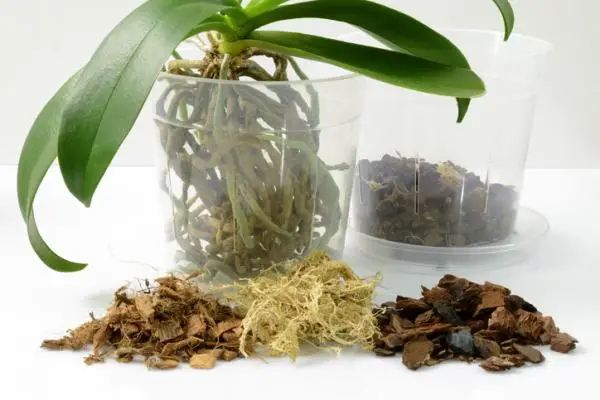Orchids are plants with very beautiful flowers, but with a recognized reputation for being difficult to grow. It is true that sometimes this statement is exaggerated and it is simply about plants with some specific needs, but a good substrate will always help a lot to keep your orchids healthy.
If you want to learn how to make your own substrate or soil for orchids , join us in this article in which we tell you all about how to make orchid substrate and use it correctly, as well as the preparation of the pots and when it is convenient to do a transplant of these plants, changing their substrate.
How to make substrate for orchids – easy recipes
Before preparing your substrate or soil mixture for orchids , you should check if your orchids are epiphytic , terrestrial or semi-terrestrial plants , since they require different characteristics and components. Depending on its type, this is how to prepare substrate for orchids :
How to make substrate for epiphytic orchids
For this type of orchid, it is best to make a substrate that has these materials:
- Three parts of pine bark (if possible, make it Mediterranean pine).
- Three parts of cork.
- A part of white peat.
- A last part of seramis or clay granules.
- 2 g of acid lime per liter of substrate.
The pine bark and cork will be the base of the substrate, and they help to give the mixture an adequate level of acidity, which the acid lime has just adjusted. The white peat has the mission of storing water, to provide the plant with the humidity it needs in a sustained way, and the seramis helps the substrate to be more ventilated.
Substrate for terrestrial or semi-terrestrial orchids
In this case, use these orchid soil or substrate materials:
- Five parts of pine bark.
- A part of white peat.
- A part of charcoal.
- One part of vermiculite.
- 2 grams of acid lime per liter.
The main difference with the substrate for epiphytic orchids is that we add more pine bark and remove the cork, in addition to adding charcoal to further increase the pH level of the substrate. Vermiculite helps us so that the mixture retains its nutritional salts.
In both cases, once you have all the proportions of each material, it only remains to mix everything to fill the pot.

What are the best pots for orchids and how to prepare them
There is a rumor that orchids need clear pots because they photosynthesize through their roots. It is true that a transparent pot will help us take better care of our orchid, but not because the plant photosynthesizes with its roots, which is totally false. What happens is that in these plants it is especially important to control the state of their roots , especially when it comes to knowing when to water them.
When the roots are green, the plant has enough water, while if they turn whitish, it is a sign that you should water it. Some species are particularly sensitive to these changes in humidity, such as Phalaenopsis, and the most common is to always find them in transparent containers.
In addition to this, it is good that the pot in which you place your orchid has a small ledge or legs that raise it above the ground, so that the substrate is not in direct contact with the water that escapes through the drainage holes, since This excess moisture can result in waterlogging and be very damaging.
In the case of epiphytic orchids , they can also benefit greatly from the use of hanging baskets . This allows its aerial roots to escape, which helps the plant to better absorb the moisture it needs from the air and, therefore, to grow properly. In fact, it is a possibility to completely dispense with any basket and limit yourself to hanging the plant from the stem , which gives a very striking and daring appearance.

When and how to transplant orchids
These plants need periodic transplants to grow properly. In fact, it is advisable to carry out the transplant every 2 years , between late winter and early spring, before the plant activates its rhythms.
In the case of transplanting epiphytic orchids , follow these steps:
- Prepare a new pot with a suitable substrate, filling it up to a little more than half.
- Water the pot with plenty of water 2 hours before transplanting.
- Extract the plant very carefully and take advantage of the humidity of the substrate to remove it from the roots more easily, paying special attention not to damage them.
- Plant the orchid in the new pot, pour in the rest of the orchid growing medium, and water the plant.
If it is terrestrial orchids, follow the usual steps for a transplant but keep in mind that you do not need to moisten the plant so much before transplanting. Just be careful with the roots so you don’t damage them.

